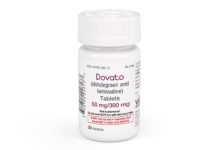Alexei Zelenev and colleagues presented an elegant analysis of treatment-as-prevention (TasP) for hepatitis C virus (HCV) infection in people who inject drugs (PWID), using a model capturing the dynamics of the injecting-partnership network, which is superior to the more common approaches of compartmental modelling (omitting network structure) and static network modelling (omitting changes in partnerships over time).
Their findings about the importance of diversity in PWID populations and injecting-partnership networks reinforce those of a recent study that used behavioural data from PWID in London, UK, to parameterise and compare different dynamic network models, and a standard compartmental model, about the effect of TasP. In this population, where HCV prevalence is 43%, TasP can be highly effective but limited information about the detailed characteristics of the injecting-partnership network causes uncertainty in the coverage required.
Zelenev and colleagues emphasise the need for “sufficient coverage” in settings where TasP could be effective. We highlight that an intensive intervention with relatively high coverage will be cheaper and more effective than a less intensive intervention that is nevertheless “sufficient”. This is because transmission is reduced more rapidly and therefore fewer courses of treatment are ultimately required to obtain the same reduction in prevalence (reducing costs) and fewer cases of illness occur (benefiting health). We encourage funders to be bold and to commit substantial resources initially, rather than providing incremental funding and requiring evidence of impact before committing further funds. A similar approach to sexually transmitted infections in England in the mid-2000s, informed by modelling, achieved success.
Notably, direct comparison of dynamic injecting-partnership network modelling with compartmental modelling (which assumes that everyone is constantly connected equally to everyone else) found that the compartmental approach is highly over-optimistic about TasP, greatly underestimating the coverage necessary for HCV control.
Post-treatment re-infection risk is a key determinant of TasP’s cost-effectiveness; it depends on whether individual patients continue injecting drugs (and whether their injecting practices become safer if so), and on HCV prevalence in their injecting partners, which in turn depends on the scale and targeting, of TasP and other interventions. Since “small-scale trials are suitable only for measuring the individual-level [behavioural] component [of re-infection risk]”, an empirical study of the impact of TasP for HCV in PWID, as well as potential synergies5 of combining with opiate substitution therapy and needle and syringe programmes, needs to be done at full scale.6
Finally, modelling would ideally use realistic dynamic networks, with local population parameters, including progression rates,7 to inform appropriate intervention decisions.
We declare no competing interests. PJW thanks the UK National Institute for Health Research (NIHR) Health Protection Research Unit in Modelling Methodology at Imperial College London, in partnership with Public Health England (HPRU-2012-10080), the Medical Research Council (MR/K010174/1), and UK Department of Health (DH PRP 015/0306), for funding. IA was supported by the NIHR, the Department of Health Policy Research Programme (015/0306), and the Medical Research Council. The views expressed are those of the authors and not necessarily those of the Department of Health, Medical Research Council, NHS, NIHR, or Public Health England.


 ПОИСК ПО САЙТУ
ПОИСК ПО САЙТУ  поиск по ресурсному центру
поиск по ресурсному центру 



